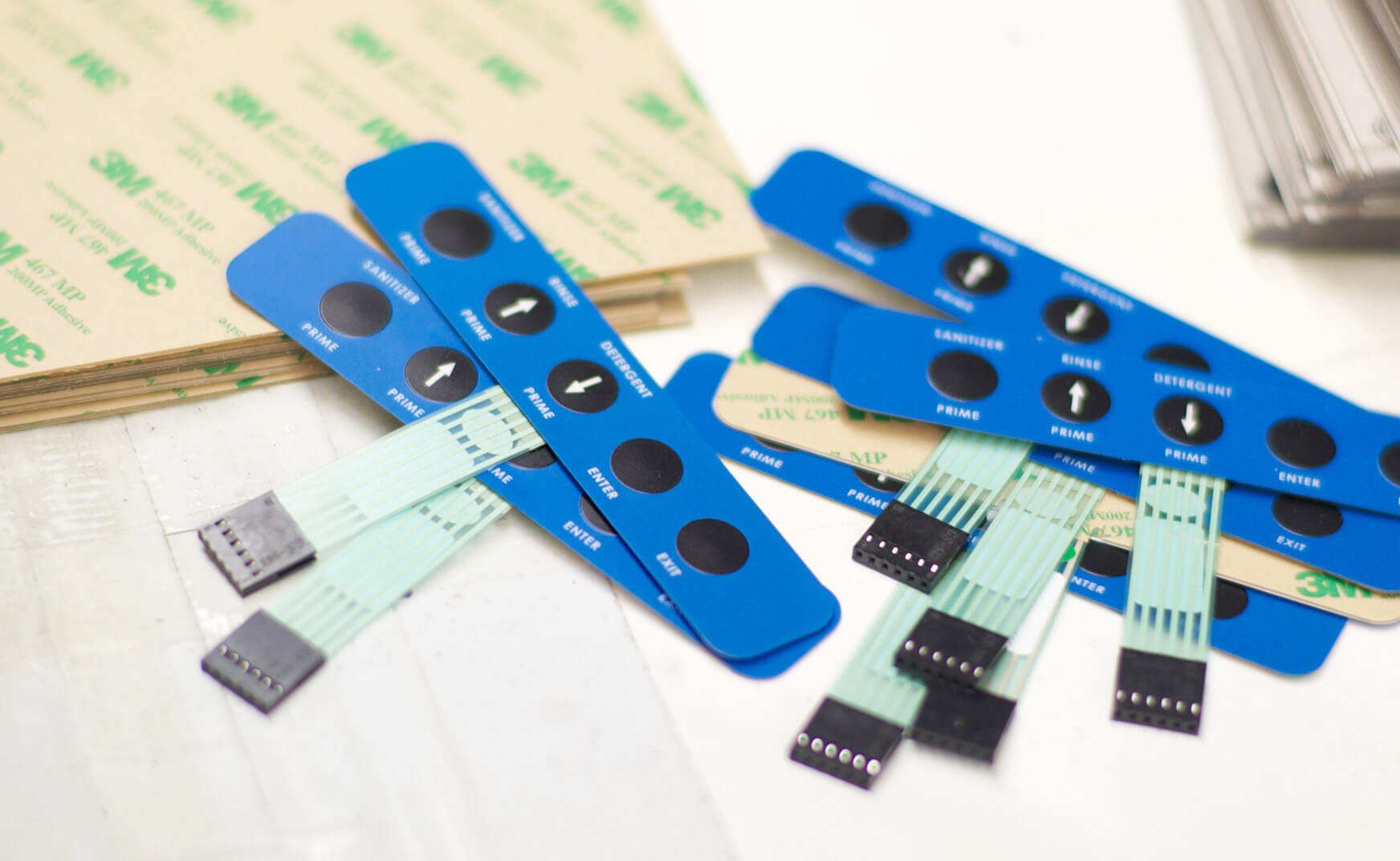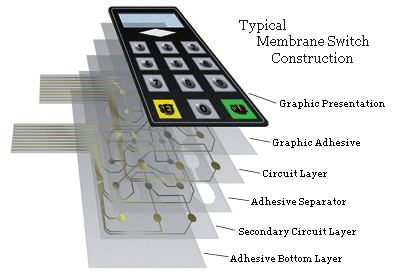Everything About Membrane Switch: Comprehending Its Style and Capability
When you believe regarding the control interfaces in contemporary devices, membrane layer buttons often come to mind. Let's discover what sets membrane layer changes apart from other control systems.
What Are Membrane Buttons?

Membrane layer buttons can also be tailored relating to shape, dimension, and graphics, allowing makers to produce one-of-a-kind user interfaces customized to particular products. Overall, membrane layer switches play a significant function in enhancing individual experience across a wide selection of applications.
How Membrane Layer Switches Job
When you press a key on a membrane layer switch, it turns on an uncomplicated yet efficient mechanism. The leading layer, often made from versatile material, pushes down onto a conductive layer below it. This activity bridges the gap between conductive traces, completing an electrical circuit. As soon as the circuit shuts, it sends a signal to the device's controller, which interprets your input.
You'll see that the tactile feedback varies based upon the switch design, providing either a soft click or a more pronounced feedback. When you launch the trick, the membrane returns to its original placement, reopening the circuit and quiting the signal. This procedure occurs practically instantaneously, making sure a receptive individual experience.
Membrane switches are preferred due to their resilience and resistance to dust and moisture, making them excellent for various applications, from family appliances to clinical gadgets. Comprehending this procedure aids you value their widespread use.
Key Parts of Membrane Layer Switches
Recognizing the vital elements of membrane layer switches is basic for understanding their functionality and style. The protective layer guards against environmental variables and use, extending the button's life expectancy. By understanding these components, you'll gain insight right into just how membrane layer switches operate and their importance in various applications.
Materials Used in Membrane Layer Change Layout
The efficiency and resilience of membrane layer changes heavily depend upon the materials used in their style. You typically encounter polyester and polycarbonate as main substrates as a result of their excellent strength and versatility. These products resist scratches and chemicals, making them perfect for requiring settings.
The conductive layers commonly utilize silver or carbon, picked for their reliability and conductivity. membrane switch manufacturer. Silver gives superior performance, while carbon is a cost-effective choice. For the overlay, you could consider a matte or glossy surface, depending on your visual needs and customer experience
Adhesives play a necessary function also; they bond layers securely and ensure durability. Make specific to pick adhesives that withstand environmental elements like temperature level and moisture. Ultimately, don't ignore the relevance of a good printing method for graphics, as it boosts both performance and visual charm. Choosing the appropriate materials will guarantee your membrane layer button stands the examination of time.
Layout Factors To Consider for Membrane Buttons
While designing membrane layer switches, it's vital to think about different aspects that influence their capability and individual experience. Begin by concentrating on the design and button dimension; make sure they're instinctive and straight from the source easy to browse. Think about the tactile comments you wish to supply-- will customers need an obvious click or a softer touch? Furthermore, think regarding the materials you'll utilize, as they'll impact longevity and aesthetics.
Validate your layout click here for info accommodates environmental factors, like wetness or temperature variants, which might influence efficiency. By carefully thinking about these aspects, you'll develop a membrane button that boosts functionality and contentment.
Applications of Membrane Layer Switches
Membrane layer switches are functional parts located in various applications, from industrial tools to consumer electronic devices. You'll see their impact in equipments that call for resilient user interfaces and in tools that gain from streamlined styles. Comprehending these applications assists you value the capability and practicality of membrane buttons in daily modern technology.
Industrial Devices Use
When you're looking to improve the functionality of commercial tools, membrane buttons provide a reliable solution that incorporates sturdiness with user-friendly layout. These buttons are ideal for severe environments, supplying resistance to dust, moisture, and chemicals. Welcome membrane layer buttons to improve your procedures and improve general performance.
Consumer Electronic Devices Integration
In the domain of consumer electronics, membrane layer buttons play a crucial function in improving user communication you can try this out and device capability. Membrane layer switches likewise guarantee longevity and resistance to dirt and dampness, prolonging the life-span of your electronics. By choosing membrane buttons, you improve not simply the performance however likewise the design of your gadgets, making daily communications smooth and delightful.
Benefits and Disadvantages of Membrane Switches
While membrane layer buttons provide a variety of benefits, they additionally come with some downsides that you need to consider. One substantial advantage is their portable style, making them ideal for space-constrained applications.

Nonetheless, there are negative aspects. Membrane layer buttons can have a much shorter life-span contrasted to mechanical buttons, particularly under hefty usage. They can likewise be less responsive, which may impact customer feedback throughout procedure. If harmed, fixing them can be challenging and usually requires complete replacement. Eventually, their sensitivity to severe temperature levels and environmental conditions may limit their performance in specific settings. Balancing these benefits and drawbacks will help you identify if membrane buttons are the right suitable for your job.
Frequently Asked Concerns
The Length Of Time Do Membrane Changes Generally Last?
Membrane layer changes typically last between 5 to one decade, relying on usage and environmental problems. You'll want to review variables like wear, direct exposure to dampness, and temperature level fluctuations to determine their durability efficiently.
Can Membrane Layer Switches Be Personalized for Certain Styles?
Yes, you can personalize membrane switches to fit certain styles (membrane switch manufacturer). You'll have the liberty to select colors, forms, and designs that match your job's requirements, ensuring they mix flawlessly with your overall visual
What Is the Price Range for Membrane Layer Switch Over Manufacturing?
The cost range for membrane layer switch production typically falls in between $1 and $10 per unit, relying on aspects like layout complexity, quantity, and materials. You can obtain quotes from producers to locate the best choice.

Are Membrane Changes Water-proof or Immune?
Membrane switches can be created to be waterproof or immune, depending on materials utilized and building and construction methods. If you require them for wet environments, assure you specify those demands throughout the layout procedure.
How Do Membrane Layer Switches Over Compare to Traditional Buttons?
Membrane layer buttons are normally thinner and extra adaptable than typical buttons, offering a sleek layout. They're often simpler to cleanse and incorporate, but could not provide the tactile feedback you're utilized to with mechanical choices.
Conclusion
